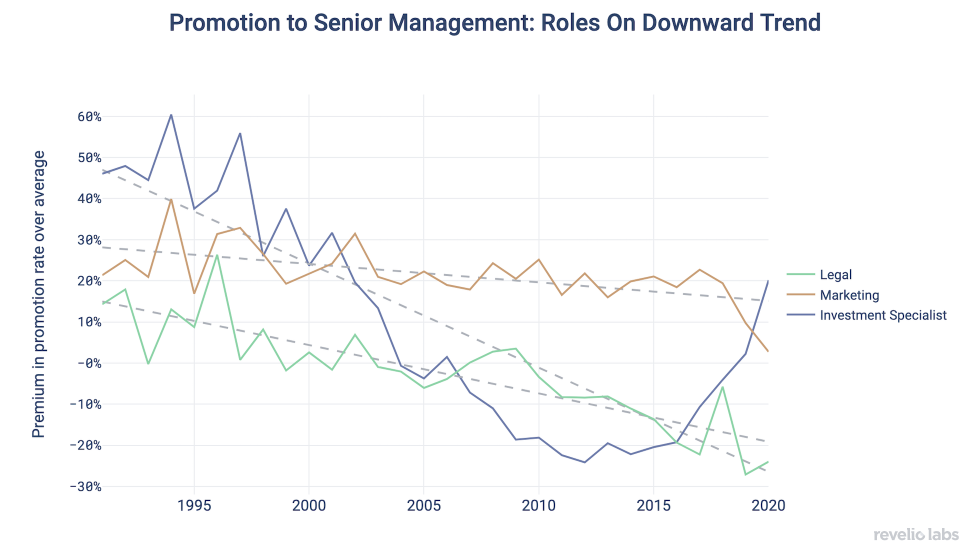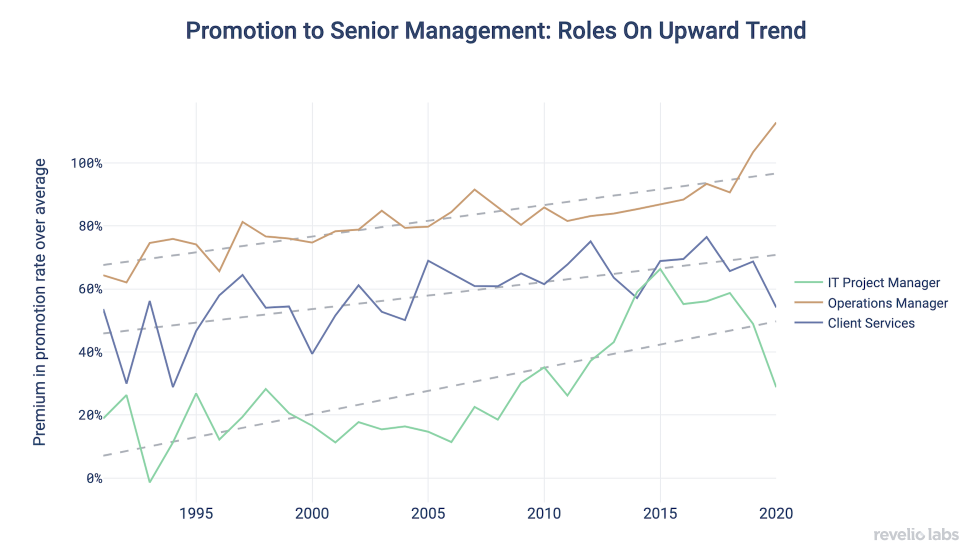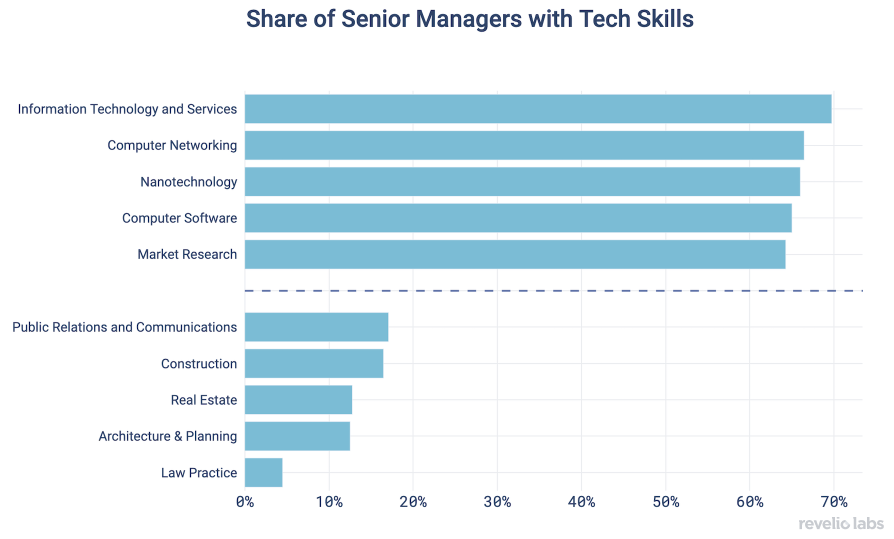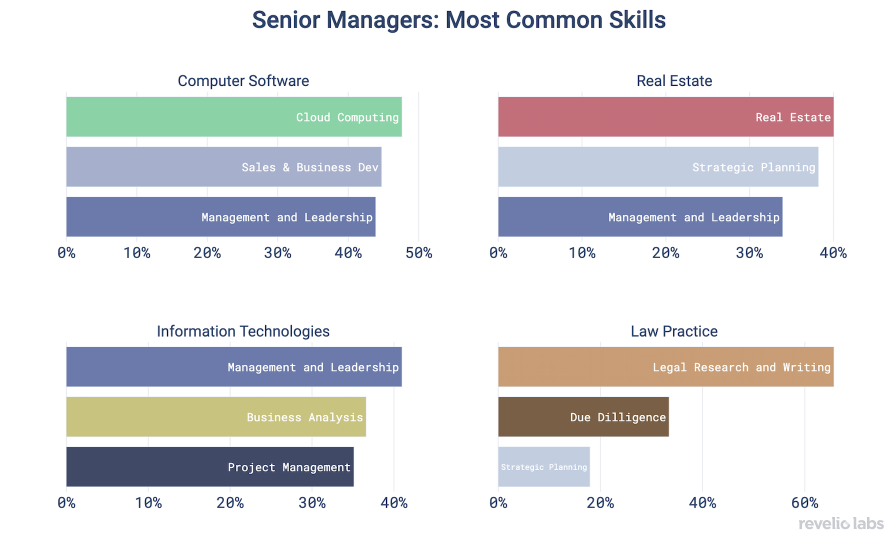How to Get the Corner Office
Which roles and skills are being deemed promotion-worthy?

Many compete to make it into the upper echelon of management. But the paths to leadership can be unclear. Based on an analysis of hundreds of millions of careers using Revelio Labs data analytics software tools, we can see which jobs are most likely to be promoted into senior management.
Roles in Marketing, Legal and Investment Management used to have the highest chances of promotion into senior management. More recently, however, Operations Managers, Client Services and IT Project Managers appear to have a greater chance. This is reflective of the growth of SaaS companies, and the decline in importance of more traditional business functions.




Sign up for our newsletter
Our weekly data driven newsletter provides in-depth analysis of workforce trends and news, delivered straight to your inbox!
With IT Project Managers on the rise, a question emerges of whether technical skills are necessary to achieve senior management positions. While the majority of senior managers in the Tech industry indeed have technical skills — top management in other industries, like Law and Communications, are less tech-savvy.


More generally, the most common skills of senior managers across industries are Management, Strategy and Planning skills, paired with the respective domain expertise, according to our skills taxonomy.


Key Takeaways:
- Consistent with the growth of software products and attention to customer service, we see using Revelio data analytics software tools that IT Project Managers and Client Service Managers see an upward trend on their path to senior management.
- Most senior managers in the Tech Industry have technical skills, while Law has the least tech-savvy senior managers, our skills taxonomy shows.
- Top management not only knows Management, Leadership and Strategy, but also needs to possess domain expertise of their respective industry.
Check out some of our other articles on seniority to find out which companies promote most from within and to see how workforce compositions change as you climb the corporate ladder.


